
- [2024] Safety Measures for Climbing Mount Fuji
- 2. When to go
- 3. Mountain Trails
- 4. Itineraries
- 6. Equipment
- 7. Etiquette
- Safe Climbing Checklist
- Utilizing Electronic Devices in the Mountain
- Weather Conditions and Forecasts
- Live Camera
- Climbing Itinerary Report (Tozan-todoke)
- Information Centers
- Facilities at Trailheads
- Fujisan Conservation Fund-raising Campaign
- Common Problems and Solutions
- Rules and Regulations
- Toilets on the Trails
- Staying on the Right Track
- Avoid Mountain Accidents
- How to Walk Efficiently
- Injuries and Illnesses
- Emergency Contact Information

Important Notice:
Mt.fuji volcanic alert level.
- Notice Information New 2024.04.17 [Yoshida Trail] 2024 Restrictions overview and FAQ
- Notice Information New 2024.04.17 [2024] Safety Measures for Climbing Mount Fuji
- Information 2023.11.21 Ochudo (Fuji Subaru Line 5th sta to 4th sta. Okuniwa) traffic regulation information
- Notice Information 2023.11.10 Regarding winter road closures leading to Mt. Fuji Subashiri, Gotemba and Fujinomiya trails.
- Notice Information 2023.09.29 【Yoshida Trail】 Effective September 11, the trails are closed for the winter (both ascending and descending).
- Notice Information 2023.09.11 Mt. Fuji Climbing Season 2023 Ended
- Notice Information 2023.07.12 1,000 or more cases of getting lost! Please make use of Mt. Fuji App.
- Notice Information 2023.07.04 Opening of Subashiri, Gotemba and Fujinomiya trails, and the summit rim trail (Ohachimeguri Trail)
- Notice Information 2023.06.30 Yoshida Trail to open on July 1 for 2023 season
- Notice Information 2023.06.24 [To those planning to climb the Yoshida Trail during 7/1 - 7/10] Regarding the summit rim trail and the mountain summit public toilet
Live cameras
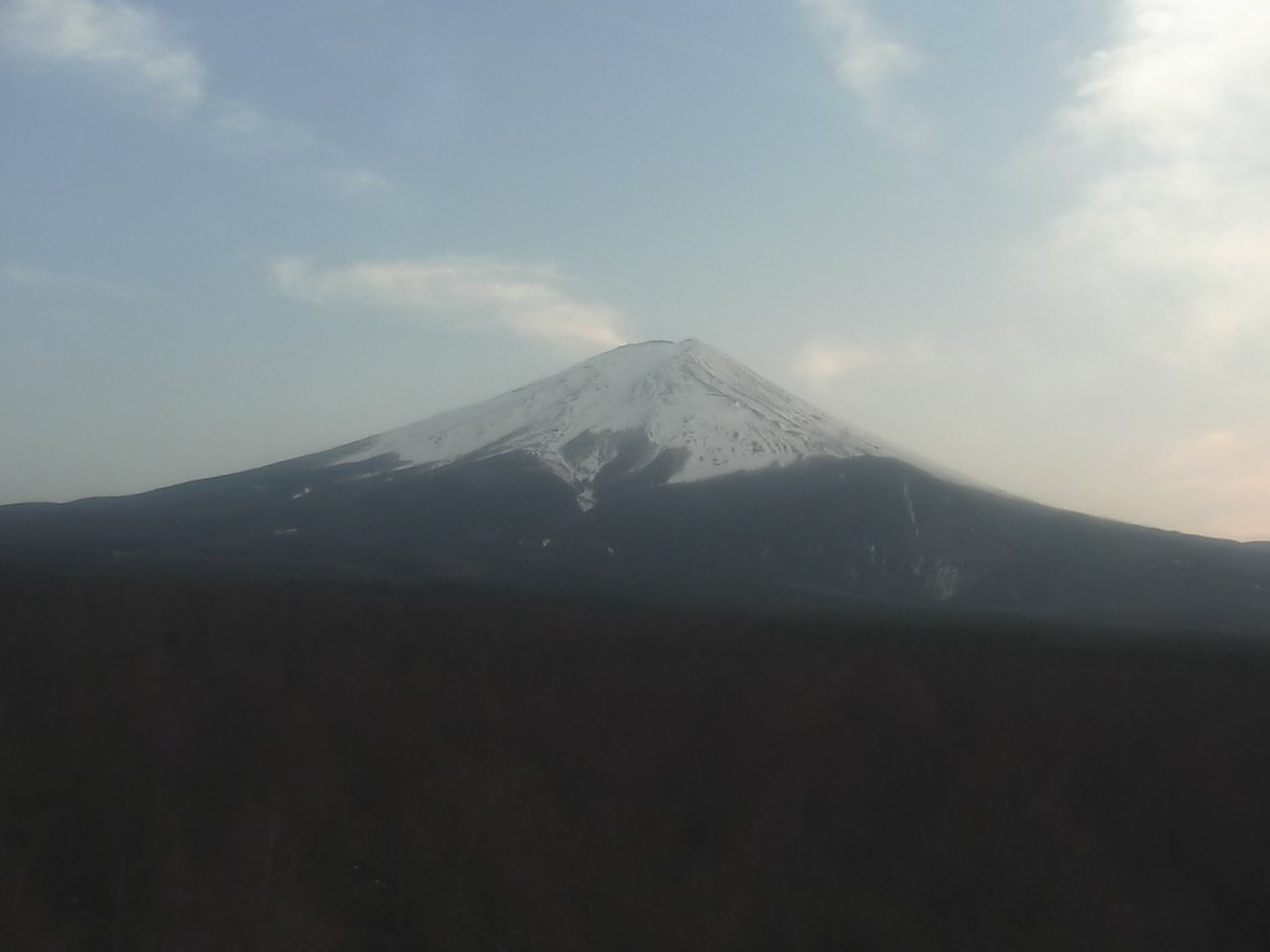
- Detailed site info(Japanese only)
- About the Council(Japanese only)
- Media & Industry
- Meetings & Events
- Select Language 简体中文 繁體中文(香港) 繁體中文(臺灣) India (English) Bahasa Indonesia 한국어 ภาษาไทย Tiếng Việt Singapore (English) Philippines (English) Malaysia (English) Australia/New Zealand (English) Français Deutsch Italiano Español United Kingdom (English) Nordic countries(English) Canada (English) Canada (Français) United States (English) Mexico (español) Português العربية Japan(日本語) Global (English)
- India (English)
- Bahasa Indonesia
- Singapore (English)
- Philippines (English)
- Malaysia (English)
- Australia/New Zealand (English)
- United Kingdom (English)
- Nordic countries(English)
- Canada (English)
- Canada (Français)
- United States (English)
- Mexico (español)
- Global (English)
- Fujiyoshida
- Shimonoseki
- Ishigaki Island
- Miyako Island
- Kerama Island
- Tokyo Island
- Koka & Shigaraki
- Hida Takayama
- Ginza, Nihonbashi
- Beppu & Yufuin (Onsen)
- Ginzan Onsen
- Nagasaki Islands

- Kumano Kodo
- Shikoku Karst
- Amami Oshima
- Hachimantai
- Omihachiman
- Aizuwakamatsu

- Diving in Japan
- Skiing in Japan
- Seasonal Flowers in Japan
- Sustainable Outdoors
- Off the Beaten Track in Japan
- Scenic Spots
- World Heritage
- Home Stays & Farm Stays

- Japanese Gardens
- Japanese Crafts
- Temple Stays
- Heritage Stays
- Festivals and Events
- Theater in Japan
- Japanese Tea Ceremony
- Cultural Experiences in Japan
- Culture in Japan

- Local Cuisine Eastern Japan
- Local Cuisine Western Japan
- Local Street Food
- Japan's Local Ekiben
- Japanese Whisky
- Vegetarian and Vegan Guide
- Sushi in Japan Guide
- Japanese Sake Breweries

- Art Museums
- Architecture
- Performing Arts
- Art Festivals
- Japanese Anime and Comics
- Japanese Ceramics
- Local Crafts

- Scenic Night Views
- Natural Wonders
- Theme Parks
- Samurai & Ninja
- Iconic Architecture

- Wellness Travel in Japan
- Japanese Ryokan Guide
- A Guide to Stargazing in Japan
- Relaxation in Japan
- Forest Bathing (Shinrin-yoku)

- Experiences in Japan
- Enjoy my Japan
- National Parks
- Japan's Local Treasures
- Japan Heritage
- Snow Like No Other
- Wonder Around Japan

- Visa Information
- Getting to Japan
- Airport Access
- COVID-19: Practical Information for Traveling to Japan
- Anime Tourism
- Countryside Stays
- Accessible Tourism
- Hokkaido Great Outdoors
- Scenic World Heritage in Tohoku
- Shikoku’s Nature and Traditions
- Southern Kyushu by Rail

- Traveling by Rail
- How to Travel by Train and Bus
- JR Rail Passes
- Scenic Railways
- Renting a Car
- Sustainable Travel in Japan
- Travel Brochures
- Useful Apps
- Online Reservation Sites
- Eco-friendly Accommodation
- Luxury Accommodations
- Traveling With a Disability
- Hands-free Travel
- How to Book a Certified Tour Guide
- Volunteer Guides
- Tourist Information Center

- Japanese Manners
- Spring in Japan
- Summer in Japan
- Autumn in Japan
- Winter in Japan
- Cherry Blossom Forecast
- Autumn Leaves Forecast

- Japan Visitor Hotline
- Travel Insurance in Japan
- Japan Safe Travel Information
- Accessibility in Japan
- Vegetarian Guide
- Muslim Travelers
- Safety Tips

- JAPAN Monthly Web Magazine
- Arts & Cultures
- Nature & Outdoor
- Festivals & Events
- Insider Blog
- Things to do
- Local Guides
- Food & drink
- Traditional
- Hokuriku Shinetsu

My Favorites
${v.desc | trunc(25)}
Planning a Trip to Japan?
Share your travel photos with us by hashtagging your images with #visitjapanjp
GUIDE Mt. Fuji Climbing Guide
Notice: Climbing Mt. Fuji without staying in a hut is extremely dangerous unless you have sufficient climbing experience.
For more information, please check the official website for Mt. Fuji Climbing .
How to climb Mt. Fuji, Japan's most famous peak
- Viewing the sunrise from the summit alongside a few thousand fellow hikers
- Walking along the rim of the summit's crater
- Purchasing a walking stick to get stamped as you climb—an excellent memento
When to climb Mt. Fuji
Many hikers opt for a two-day journey, resting at a hut situated half-way up the mountain before departing for the summit in the early hours of the morning. This plan puts you at the top in time for the picturesque sunrise.

Mt. Fuji weather
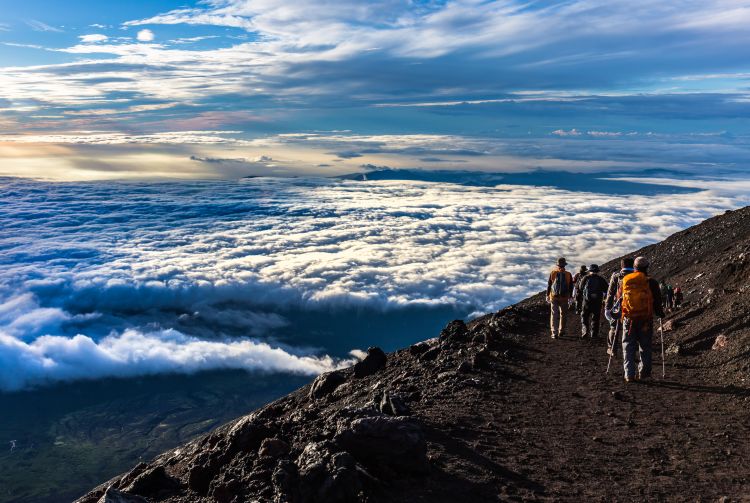
Safety and planning
Hiking in the dark requires extra precaution. Careful planning, adequate gear, and mental preparation are key to climbing the mountain safely. If staying a night on the mountain, make sure to reserve your hut well in advance, as lodgings fill up during the busy season.
What to bring
Equip yourself with proper hiking shoes, a hat, gloves, rainwear, a jacket, quick-drying underwear, a headlamp, trash bags, a walking stick, food, and spending money. Plan on drinking at least two liters of water.
On-site facilities
Mountain huts along the trail are well-equipped with water and other provisions like hiking sticks and snacks. If you are staying the night at one of these huts, note that there is no running water, and the restrooms are not connected to plumbing. Despite the elevation and lack of basic amenities, you'll find the Fuji Summit Post Office at the top of Mt. Fuji, where you can send postcards authentically postmarked from the mountain's summit.
Mt. Fuji trails
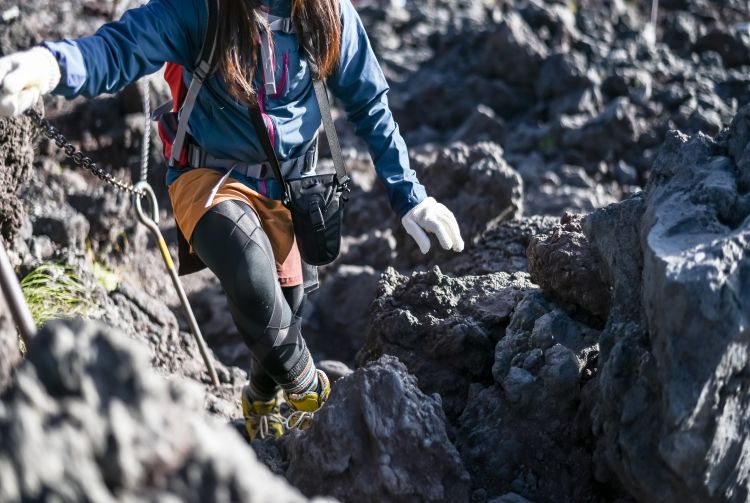
Choosing a course: the Yoshida Trail
Since the Yoshida trail is the most popular, it can get extremely crowded during peak season, particularly on weekends and holidays. The crowds can make it difficult to hike at your own pace.
Choosing a course: the Fujinomiya Trail
Choosing a course: other trails, ohachi-meguri trail (summit crater loop).
Experienced hikers may enjoy adding an extra leg to their hike by going around Mt. Fuji's crater. The hike takes around 90 minutes and is a great way to get a 360-degree view across Japan.
Local accommodations
Those looking for a quick return to the city can forgo extra accommodations and opt for a bullet train or bus ride back to Tokyo.
How to get there
If you plan to spend time in the region before your hike, bullet trains serve numerous Shizuoka destinations from Tokyo, Osaka, Nagoya and Kyoto. Shin-Fuji Station is a key transport hub for Mt. Fuji hikes on the Shizuoka side.
Mt. Fuji package tours
For novice hikers or those who don't want to do so much planning, consider climbing Mt. Fuji with a travel company. These tours can arrange pickup in Tokyo, bus tickets, guides, meals, hut reservations, and more. If you want to ensure the most strenuous part of the Mt. Fuji experience is the ascent itself, leave the rest to the experts.
* The information on this page may be subject to change due to COVID-19.
- Mt. Fuji Guide
- Mt. Fuji Climbing Guide
Please Choose Your Language
Browse the JNTO site in one of multiple languages

2-Day Mt. Fuji Climbing Tour
- Mt Fuji , Tour Reviews , Yamanashi Prefecture
Is the 2-Day Mt. Fuji Climbing Tour truly an adventure worth embarking on? This article will provide an in-depth exploration of traveler photos and reviews to determine the answer.
With a rating of 4.0 based on four reviews, this tour promises an incredible experience. However, concerns have been raised regarding organization and lack of information.
Travelers have faced challenges in locating the bus and gear hire place, as well as a language barrier and absence of an English-speaking guide. Unexpected stops and delays, including visits to a day spa and lunch place, have also been reported.
Despite these obstacles, the host has been commended for their helpfulness and assistance throughout the tour.
Join us as we uncover more about the 2-Day Mt. Fuji Climbing Tour and what it has to offer.
Great News! You can reserve your spot for free with Viator. You can easliy cancel any time up to 1 day before without paying anything.
Quick Takeaways
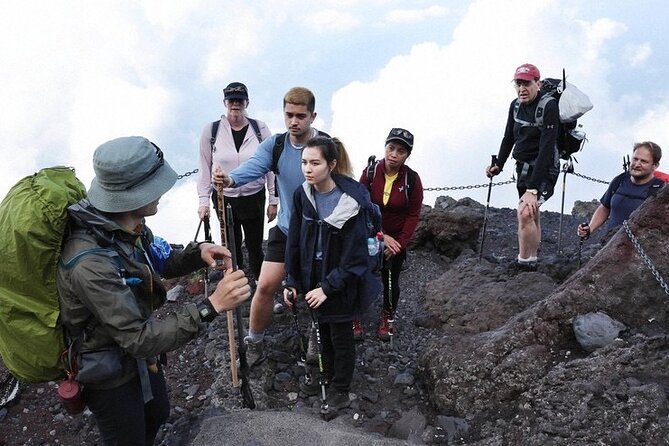
- The climbing experience of Mt. Fuji is described as amazing by travelers.
- However, there were issues with the organization of the tour, including a lack of information and difficulty in finding the bus and gear hire place.
- There were unexpected stops and delays during the tour, including an additional visit to a day spa and lunch place, a shrine not part of the tour, and a long bus ride back to Tokyo.
- The host’s response acknowledges the enjoyable climbing experience, but also mentions limited communication and language barriers , as well as positive feedback on the tour guides and other included amenities.
Not for you? Here's a few more great tours and experiences nearby.
- NRT Airport To/From Mt. Fuji (10-Seater)
- NRT Airport To/From Mt. Fuji (7-Seater)
- Exploring Mt Fuji Ice Cave and Sea of Trees Forest
- Mt. Fuji, Mt Fuji Panoramic Ropeway & Seasonal Fruits Picking
Tour Overview
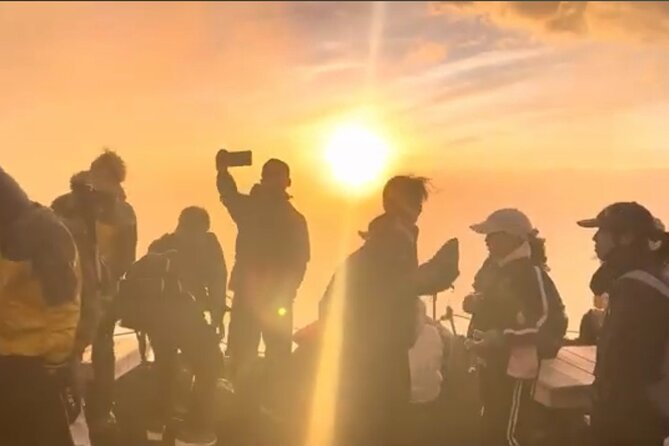
The tour provides travelers with an immersive and thrilling experience of climbing Mt. Fuji while also including unexpected stops and delays along the way.
When it comes to climbing routes , the tour offers different options to cater to varying levels of experience and fitness. Whether you’re a beginner or a seasoned climber, there’s a route suitable for you.
Necessary equipment , such as hiking boots, warm clothing , and headlamps , are also provided to ensure the safety and comfort of participants. The tour organizers understand the importance of having the right gear for a successful climb. They also prioritize the well-being of the climbers by making sure they’re properly equipped.
With the right climbing routes and necessary equipment , participants can embark on this exhilarating adventure with confidence.
Traveler Experiences
travelers have shared their experiences of the Mt. Fuji Climbing Tour, highlighting both the incredible adventure of climbing the mountain and the challenges they faced with organization and unexpected stops.
Climbing Mt. Fuji proved to be an amazing experience for many, with breathtaking views and a sense of accomplishment. However, some travelers encountered climbing challenges such as difficulty finding the bus and gear hire place, as well as a lack of information and poor organization of the tour. Language barriers added to the difficulties, as there was no English-speaking guide available.
Plus, unexpected stops and delays were reported, including a visit to a day spa and lunch place, a stop at a shrine not part of the tour, and a long bus ride back to Tokyo. These experiences highlight the importance of clear communication and proper organization in such tours.
Tour Organization Issues
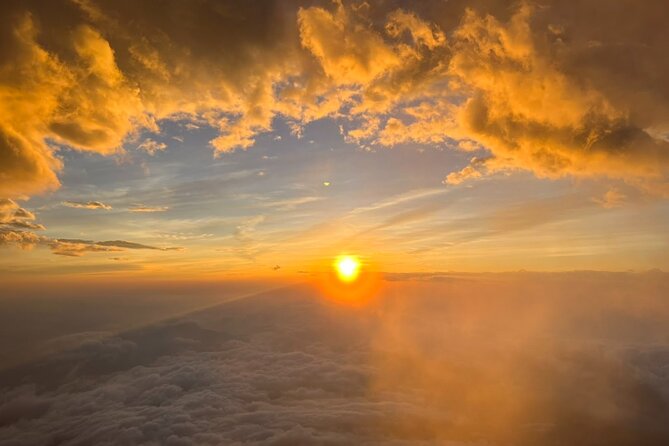
Travelers on the Mt. Fuji Climbing Tour encountered various issues with tour organization. One of the main challenges was the tour logistics . Some participants found it difficult to locate the bus and gear hire place, leading to delays and frustration. Plus, there was a lack of clarity on the itinerary and inclusions, with unexpected stops at a day spa and a shrine not originally part of the tour. Communication challenges also arose due to the absence of an English-speaking guide and the limited English-Japanese communication with the host. On top of that, the lack of phone reception and wifi on the mountain made it challenging for travelers to stay connected and receive important information. These organizational issues highlight the importance of clear communication and well-planned logistics in ensuring a smooth and enjoyable climbing experience.
Unexpected Stops and Delays
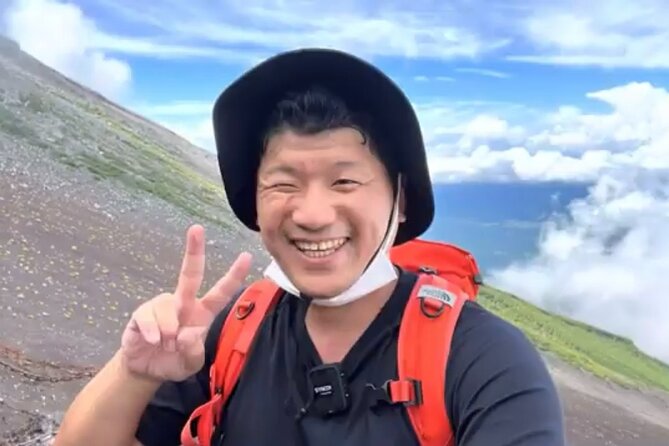
During the Mt. Fuji Climbing Tour, participants encountered unexpected stops and delays that affected their overall experience. These unexpected stops and delays were caused by various factors, including the language barrier and additional itinerary stops .
Here are four key points to understand about these unexpected stops and delays:
- Language barrier: Due to the lack of English-speaking guides, participants faced difficulties in understanding the instructions and information provided during the tour. This language barrier added to the confusion and frustration experienced by the climbers.
- Additional itinerary stops : Participants were surprised by additional stops at a day spa and lunch place, as well as a shrine that wasn’t originally included in the tour. While some enjoyed these unexpected diversions, others felt that it disrupted the flow of the tour and wasn’t clearly communicated beforehand.
- Long bus ride back to Tokyo: The return journey from Mt. Fuji to Tokyo was longer than anticipated, causing further delays and exhaustion for the participants. This extended travel time wasn’t clearly communicated in the tour description, leading to disappointment among some climbers.
- Lack of clarity on the itinerary and inclusions: Many participants mentioned a lack of clarity regarding the tour itinerary and the inclusions provided. Some felt that the information provided before the tour was insufficient, leading to confusion and unexpected surprises during the trip.
Host’s Response and Assistance

The host of the Mt. Fuji Climbing Tour responded to the participants’ feedback and provided assistance throughout the journey. Despite the language barrier and absence of an English-speaking guide, the host made efforts to address the issue. They acknowledged the enjoyable climbing experience and expressed appreciation for the tour guides.
The limited English-Japanese communication was acknowledged, but the host’s helpfulness and assistance were praised. While some participants mentioned a lack of information and poor organization, the host’s response didn’t specifically address these concerns. It would have been beneficial for the host to provide solutions or explanations for the difficulties encountered, such as the difficulty in finding the bus and gear hire place.
Climbing Tour Details
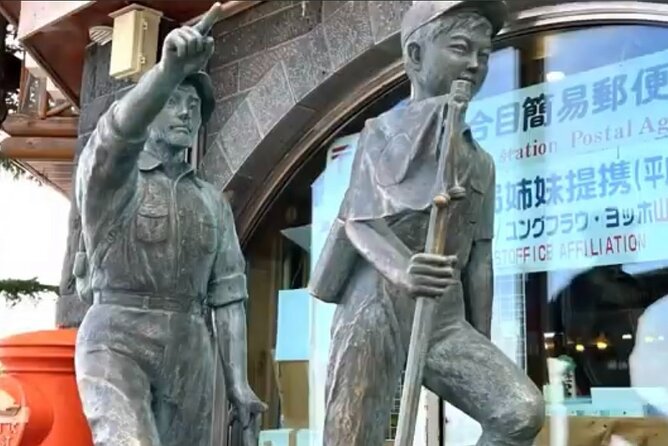
Participants in the Day Mt. Fuji Climbing Tour can expect to receive detailed information about the tour itinerary , gear requirements , and necessary preparations prior to the climb. Here are four important details that climbers should know:
- Tour Itinerary: The tour will typically start early in the morning and include transportation to the mountain, a guided climb to the summit, and a descent back to the starting point. The specific duration and schedule may vary depending on the tour provider.
- Climbing Gear : Participants will need to bring or rent appropriate climbing gear , such as sturdy hiking boots, warm clothing , rain gear , headlamp , and a backpack. It’s essential to be prepared for changing weather conditions and the physical demands of the climb.
- Necessary Preparations: Climbers should be physically fit and mentally prepared for the challenging ascent. It’s recommended to engage in regular exercise and practice hiking on uneven terrains prior to the tour. Plus, climbers should be aware of any health conditions that may affect their ability to climb.
- Safety Guidelines: Climbing Mt. Fuji involves certain risks, and climbers are advised to follow safety guidelines provided by the tour organizers. This includes staying on designated paths, staying hydrated , and being aware of signs of altitude sickness.
Tips for a Successful Climb
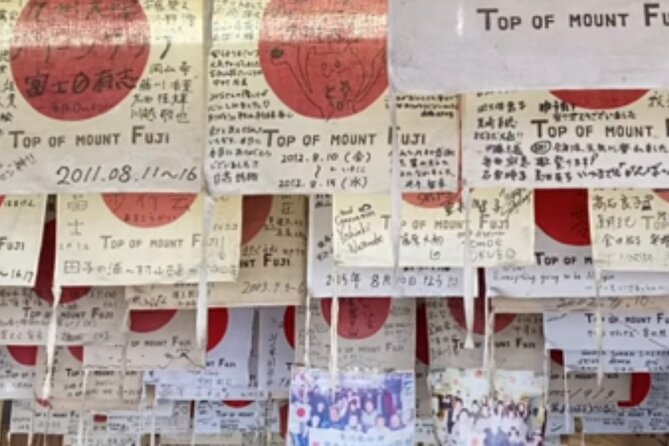
To ensure a successful climb, climbers should adhere to safety guidelines and make necessary preparations for their ascent of Mt. Fuji. Climbing techniques play a crucial role in conquering this iconic mountain. It’s important to pace oneself, taking regular breaks to avoid exhaustion and altitude sickness. Plus, climbers should practice proper breathing techniques to optimize oxygen intake at higher altitudes.
Essential gear is also vital for a successful climb. Climbers should invest in sturdy hiking boots with good traction to navigate the rocky terrain. Layered clothing is recommended to accommodate changing weather conditions, including a waterproof jacket and pants. Other essential gear includes a headlamp , trekking poles for stability, a backpack with ample storage capacity, and plenty of water and food to stay hydrated and energized throughout the climb.
The Sum Up and Final Thoughts
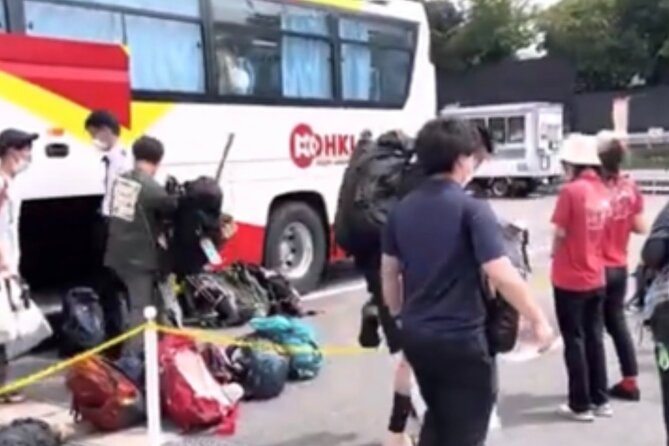
After reflecting on the experience, climbers can draw their own conclusions and thoughts about the Day Mt. Fuji Climbing Tour. Here are the tour highlights and recommendations for improvement :
Tour Highlights :
- Climbing Mt. Fuji was an incredible experience, providing breathtaking views and a sense of accomplishment.
- Traveler photos captured the beauty of the mountain from different angles, inspiring future adventurers.
- The tour guides received positive feedback for their assistance and helpfulness during the climb.
- The inclusion of amenities such as a day spa visit and lunch added unexpected but enjoyable moments to the tour.
Recommendations for Improvement :
- Better organization and communication would enhance the experience, including clearer instructions for finding the bus and gear hire place.
- Providing information about the itinerary and additional stops, like the shrine visit, would help manage expectations.
- Offering an English-speaking guide or translation services would overcome the language barrier for non-Japanese speakers.
- Improving connectivity options, such as providing phone reception or wifi on the mountain, would enhance communication and safety.
Frequently Asked Questions
Are there any additional fees or expenses not mentioned in the tour details.
There may be additional costs or hidden fees not mentioned in the tour details. It is advisable for travelers to inquire about any potential expenses that may arise during the Day Mt. Fuji Climbing Tour.
Is There a Minimum Age Requirement for the Climbing Tour?
There is a minimum age requirement for the climbing tour. The tour organizers have set an age limit to ensure the safety and enjoyment of all participants during the challenging ascent of Mt. Fuji.
What Is the Average Duration of the Climb?
The average duration of the climb on Mt. Fuji varies depending on the chosen route and the climber’s fitness level. It can range from 5 to 10 hours for the ascent and 3 to 6 hours for the descent.
Are Meals Provided During the Climb?
Meals are provided during the climb, with various options available to cater to different dietary restrictions . Travelers can enjoy a nourishing meal as they embark on their Mt. Fuji adventure.
Is There a Maximum Group Size for the Climbing Tour?
The maximum group size for the climbing tour is not specified. However, the tour details mention traveler photos and reviews, including feedback on the tour guides and other amenities included in the package.
To sum it up, while the Day Mt. Fuji Climbing Tour promises an incredible adventure, there have been some concerns about organization and lack of information.
Travelers have faced difficulties finding the bus and gear hire place, as well as language barriers and unexpected stops.
However, the host has been praised for their helpfulness and assistance during the tour.
With proper preparation and understanding of the challenges, the 2-Day Mt. Fuji Climbing Tour can still provide an enjoyable and memorable experience.
Related Posts

Private Airport Transfer Kansai Airport in Kyoto Using Hiace
- December 31, 2023

Private Miyajima Oyster and Sakurao Whisky Distillery Tour

Seasonal Shuttle to Minami-Sado
Trending now.

Climbing Mount Fuji
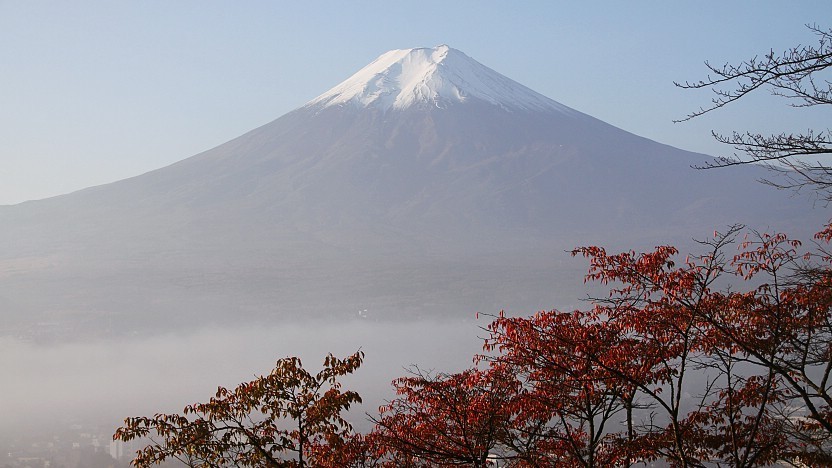
Climbing Mount Fuji (3776 meters), Japan's highest and most prominent mountain, can make for lifelong memories. The mountain itself may look more attractive from afar than from close up, but the views on clear days and the experience of climbing through the early morning hours among hundreds of equally minded hikers from across the world are very rewarding.
When to climb?
Official climbing season.
Early July to mid September is the official climbing season when the trails and mountain facilities are open. During this period the mountain is usually free of snow, the weather is relatively mild, access by public transportation is easy, and the mountain huts are operating. Anyone without much hiking experience is advised to tackle the mountain during the official climbing season. The specific dates depend on the year and trail. In recent years they have been set as follows:
- Yoshida Trail: July 1 to September 10
- Subashiri, Gotemba and Fujinomiya Trails: July 10 to September 10
Climbing Mount Fuji is very popular not only among Japanese but also foreign tourists, who seem to make up more than a third of all hikers. The peak season for climbing Mount Fuji is during the school vacations which last from around July 20 to the end of August. The peak of the peak is reached during the Obon Week in mid August, when climbers literally have to stand in queues at some passages.
While you may want to avoid the Obon Week, we believe that by avoiding the crowds in general, you would miss out one of the most interesting aspects of climbing Mount Fuji , which is the camaraderie and unique experience of ascending the mountain among hundreds of equally minded people from across the world.
In order to encounter neither too large nor too small crowds, we recommend to climb Mount Fuji on a weekday in the first half of July before the start of the school vacations. The downside of a climb in early July is the weather, which tends to be more unstable than later in the season.
Some mountain huts open a few days before the start of the official climbing season and/or remain open until around mid September. Public transportation, is considerably less frequent or non-existent outside of the official climbing season.
While there is usually no snow on Mount Fuji from late June until October, temperatures at the summit can drop to far below zero in the shoulder seasons. Only experienced hikers should consider the ascent in late June or September. If there is snow on the mountain, appropriate mountaineering equipment and experience is required.
From October to around mid June, climbing to the summit is highly perilous due to extreme wind and weather conditions, snow, ice and a risk of avalanches.
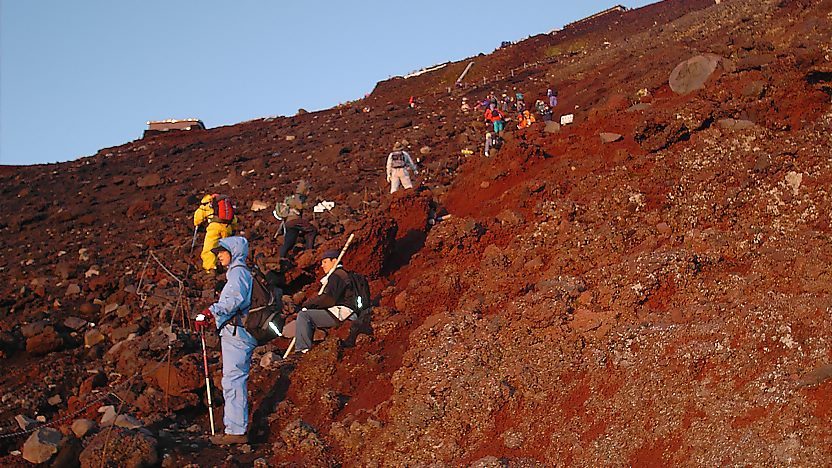
Mount Fuji is divided into ten stations with the first station at the foot of the mountain and the tenth station being the summit. Paved roads go as far as the fifth station halfway up the mountain. There are four 5th stations on different sides of the mountain, from where most people start their ascent:
- Fuji Subaru Line 5th Station (Yamanashi Prefecture) Yoshida Trail Altitude: about 2300 meters Ascent: 5-7 hours Descent: 3-5 hours This is the most popular base for the climb to the summit, and the most easily accessible 5th station from the Fuji Five Lake region and central Tokyo . Lots of mountain huts line the trail around the 7th and 8th stations, and there are separate trails for the ascent and descent. The sunrise takes place on this side of the mountain. More details...
- Subashiri 5th Station (Shizuoka Prefecture) Subashiri Trail Altitude: about 2000 meters Ascent: 5-8 hours Descent: 3-5 hours This 5th station at only 2000 meters above sea is the base of the Subashiri Trail, which meets the Yoshida Trail around the 8th station. More details...
- Gotemba 5th Station (Shizuoka Prefecture) Gotemba Trail Altitude: about 1400 meters Ascent: 7-10 hours Descent: 3-6 hours This is by far the lowest 5th station, and the ascent to the summit is accordingly much longer than from the other 5th stations. There are about four huts around the 7th and 8th stations. More details...
- Fujinomiya 5th Station (Shizuoka Prefecture) Fujinomiya Trail Altitude: about 2400 meters Ascent: 4-7 hours Descent: 2-4 hours The closest 5th station to the summit, the Fujinomiya 5th Station is the base for the southern approach via the Fujinomiya Trail. It is easily accessible from stations along the Tokaido Shinkansen . There are half a dozen mountain huts along this trail. More details...
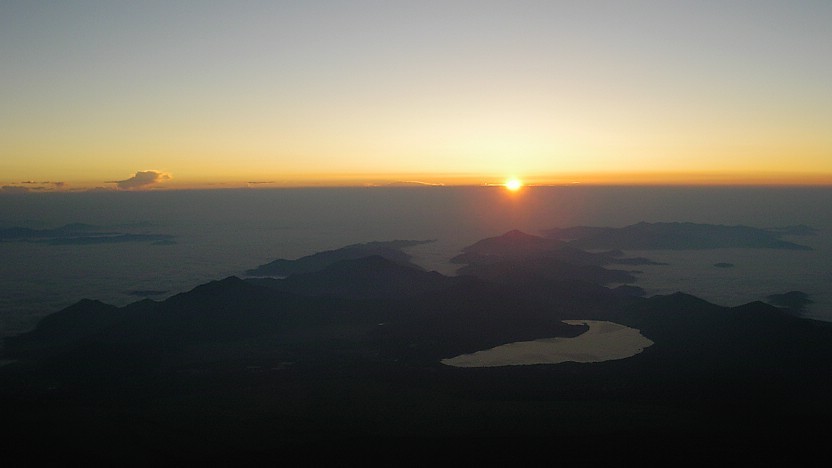
How to climb?
Is it difficult.
The ascent to the summit does not pose any major difficulties regarding climbing skills. Only at some points the terrain is rather steep and rocky. Abundant signs along the trail warn the hikers of other minor problems such as sudden wind gusts and falling rocks. However, the main challenge of the climb is the fact that it is very long and strenuous and the air gets notably thinner as you gain altitude.
Is it recommended to hire a guide?
Because the hike is not technically difficult, and there are many other hikers during the climbing season, the average person will not need a guide. However, inexperienced hikers or people who prefer to leave all the planning to somebody else may want to consider hiring a guide. There are several companies offering group or private tours, such as Klook and Willer .
Most people try to time their ascent in order to witness the sunrise from the summit. Also, the chances of the mountain being free of clouds are highest during the early morning hours.
The recommended way of doing this, is to climb to a mountain hut around the 7th or 8th station on the first day and spend some hours sleeping there before continuing to the summit early on the second day. Sunrise in summer is as early as 4:30am to 5:00am.
Another way is to start climbing the mountain in the late evening from the 5th Station and hike through the night to reach the summit around sunrise. This is a more tiring way of climbing the mountain and is strongly discouraged by the local authorities , because it brings an increased risk of altitude sickness , injury and nuisance.
Ascending and descending the mountain in a single day during daytime is also possible, but again it is not recommended for the same reasons as above. Furthermore, the mountain provides very little shelter, leaving climbers fully exposed to the sun. Visibility also tends to be worse during daytime when the mountain is frequently wrapped in clouds.
A walk around the crater of Mount Fuji takes about one hour. The mountain's and Japan's highest point is located immediately next to the weather station on the opposite side from where the Yoshida Trail reaches the peak.
Mountain huts
The Yoshida Trail is lined by more than a dozen mountain huts between the 7th and 8th stations. Other trails have fewer mountain huts. An overnight stay typically costs around 9,000 to 14,000 yen per person with two meals. Expect the huts to be extremely crowded during the peak. Reservations should be made in advance; however, getting information about individual mountain huts and making reservations is very challenging in English. Check the external links below for lists of mountain huts.
Some mountain huts also allow non-staying climbers to take a rest inside at a cost of typically 1000-3000 yen. Most also offer paid toilets (typically 200-300 yen) and sell food, water and other climbing provisions such as canned oxygen. In addition, most of the huts have special branding irons they use to brand the wooden hiking sticks (for a small fee) that many hikers purchase when climbing the mountain.
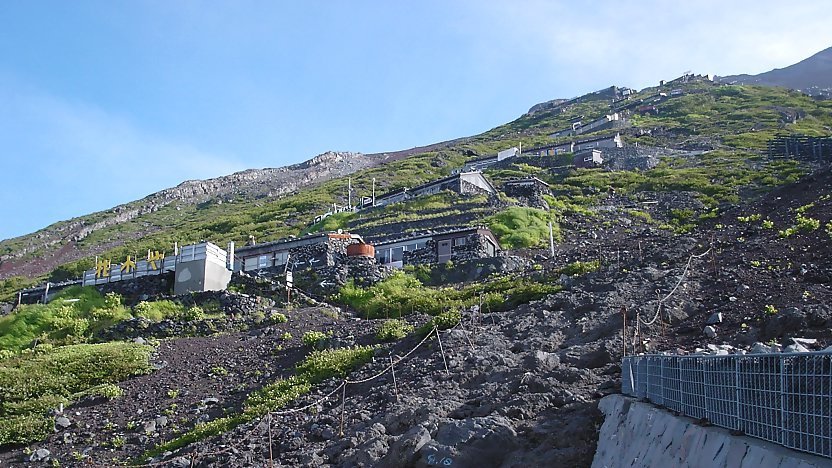
Climbing equipment
In order to enjoy a safe hike to the summit of Mount Fuji, it is crucial to bring the proper equipment. Some of the most important things to bring are listed below:
- Proper shoes The rocky, steep terrain in some sections and the potential of sudden, strong wind gusts are reasons to bring proper hiking shoes which protect your ankles.
- Proper clothes Bring proper protection against low temperatures and strong winds. It can be below zero at the summit, and strong winds often make it even colder. Bring rain gear, as weather conditions can change very quickly on the mountain. Gloves are recommended both against the coldness and for hiking the steep, rocky passages.
- Flashlight If you hike at night, a flash light is highly recommended in any season and essential outside of the peak season when the trail is not illuminated by other hikers. Most people choose head lamps, as they leave both of your hands free.
- Food It is important to bring enough water and food, particularly on the trails where there are few mountain huts along the way. Mountain huts offer various meals and drinks; however, note that prices increase with the altitude. Also, be prepared to carry home all your garbage as there are no public garbage bins on the mountain.
- Money Cash is necessary to buy provisions on the mountain like water or canned oxygen and to use the toilets along the way. It is also important to carry should you need to seek emergency shelter in one of the mountain huts.
- Hiking stick (optional) While not crucial, many hikers purchase wooden hiking sticks at the 5th Station to aid in their climb up the mountain. Hiking sticks cost about 1500-2000 yen and are sold at the 5th stations. In addition, for a few hundred yen you can get your hiking stick branded at the mountain huts along the way, turning it into a much cherished souvenir of your journey.
- Do not pick plants!
- Do not bring home any stones!
- Do not camp on the mountain!
Admission fee
During the climbing season, climbers of Mount Fuji are asked to contribute 1000 yen per person at collection stations at each trailhead. The money will be used to cover some of the expenditures arising from the huge number of climbers that visit the mountain each summer, especially regarding the protection of the environment and measures to guarantee the safety of climbers.
Altitude sickness
The human body requires some time to adjust to a sudden increase of altitude, otherwise there is a risk of headache, dizziness and nausea. Quite a few people who climb Mount Fuji , suffer from altitude sickness.
To avoid altitude sickness, you are advised to tackle the mountain at a slow pace, stay hydrated and make frequent breaks. An overnight stay at a hut around the 7th or 8th station is recommended as opposed to a straight climb to the top. Small bottles of oxygen, available at the 5th stations and mountain huts, can be an effective tool in preventing and fighting altitude sickness; however, the only reliable treatment is to descend the mountain.
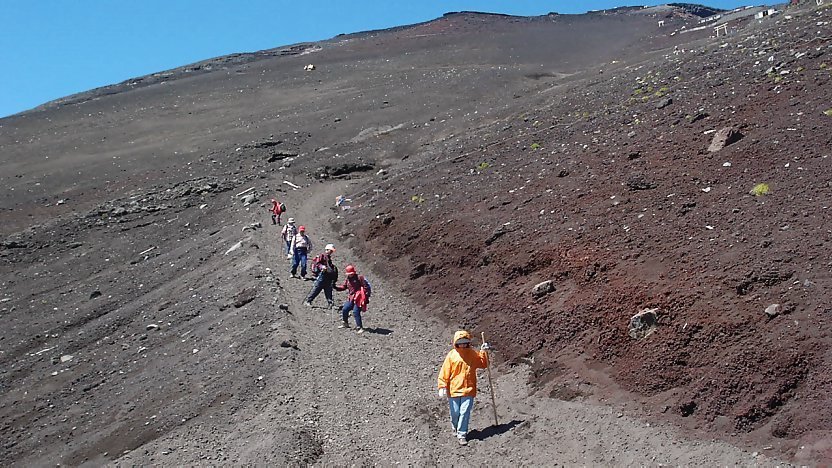
Getting there and around
Buses to fuji subaru line 5th station.
From Fujisan/Kawaguchiko Station: 1780 yen (one way), 2800 yen (round trip), 50 minutes Hourly buses during the 2023 climbing season. 4 round trips per day during the 2023 off-season. Bus Timetable (climbing season) Bus Timetable (off-season) How to get to Kawaguchiko Station
From Shinjuku Station (Tokyo): 3800 yen (one way), 150 minutes Hourly buses during the 2023 climbing season. 2-3 round trips per day during the 2023 off-season. Bus Timetable (climbing season) Bus Timetable (off-season)
Buses to Subashiri 5th Station
From Gotemba Station: 1570 yen (one way), 2700 yen (round trip), 60 minutes Every 1-2 hours during the 2023 climbing season. No off-season service in 2023. Bus Timetable (climbing season)

Buses to Gotemba 5th Station
From Gotemba Station: 1130 yen (one way), 1900 yen (round trip), 30 minutes Every 2-3 hours during the 2023 climbing season. 2 round trips in the 2023 autumn off-season. Bus Timetable (climbing season)
Buses to Fujinomiya 5th Station
From Shin-Fuji and Fujinomiya Stations: 2740 yen (one way), 3700 yen (round trip), 150 minutes from Shin-Fuji Station 2330 yen (one way), 3700 yen (round trip), 110 minutes from Fujinomiya Station 6 round trips per day during the 2023 climbing season. 1 round trip in the 2023 autumn off-season. Bus Timetable (climbing season) How to get to Fujinomiya
Access by car
The access roads to the Fuji Subaru Line 5th Station , the Subashiri 5th Station and the Fujinomiya 5th Station are closed to regular cars for certain periods during the climbing season. Please see the respective pages for more details.
Questions? Ask in our forum .
Links and Resources
Official website for mt. fuji climbing, hotels around mount fuji.
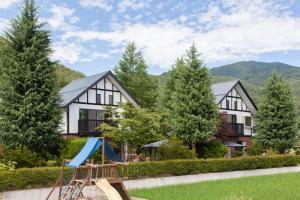
Experiences around Mount Fuji
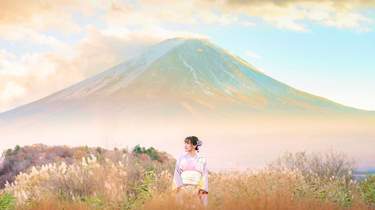

Tokyo Gaijins
Mt. fuji hike daily tour.
Climb the highest and most iconic mountain of Japan, hassle free!
We sell and run Mt. Fuji 2-day/1-night hike tours (via popular Fujiyoshida route) everyday from 2024 July 1 until September 10 (Sep 11 return).
All departure is guaranteed so once you are booked, you are going (unless we have to cancel the tour due to a typhoon or very strong wind hitting the area on the day or the night before the tour)!
Package includes round-trip bus transportation, Mt. Fuji 8th station mountain hut shared accommodation, onsen (after the long hike), and optional support (hike guide, gear rentals, etc.) you need for this challenging adventure.
Tours are operated in Japanese but considerable amount of foreigners join. You will also receive a ‘Hike pamphlet’ (in English) with trail map and other important information about the hike. English support (via email ) is also available during the tour if needed.
*English speaking tour staff is only available at the 5th station
Conquer Mt. Fuji and tick it off your bucket list!
TOUR PRICE CALENDAR
Fuji hike - tour price calendar, price includes:.
- Private bus transportation (Shinjuku - Fujiyoshida 5th station - Onsen - Shinjuku)
- 8th station mountain hut accommodation (shared - dorm style)
- Simple dinner and onigiri bento breakfast
- Rest and changing area at the Fujiyoshida 5th station
- Mt. Fuji climbing/admission fee (2,000yen)
- Onsen/spa entry
- Booking fee
- Consumption tax
- Mt. Fuji Summit Cetificate (you will only receive if joining the guided hike)
Extras/Optional:
- Guided group hike (in English) with a Certified Mt. Fuji hike guide * A code departure (21,000yen/person) * Sunday-Thursday departure (19,000yen/person) * Friday departure (20,000yen/person) * Saturday or national holiday departure (21,000yen/person)
- Fullset rental (11,000yen) *Rain jacket/pants, gaiters, trekking shoes, backpack (30L), backpack rain cover, trekking poles and headlight
- Special set rental (16,000yen) *Full set (item list above), fleece, waterproof hat/gloves, emergency blanket, knee supporter and socks
- Rainwear set rental (3,800yen) *Jacket, pants and gaiters
- Waterproof trekking shoes rental (4,000yen)
- Backpack 30L rental (3,700yen)
- Backpack rain cover rental (1,200yen)
- Headlight rental (1,500yen)
- Trekking pole rental (2,200yen) *Single
- Trekking poles rental (3,200yen) *Double
- Waterproof mountain hat rental (2,000yen)
- Fleece (3,100yen) *Buy not rent
- Waterproof gloves (2,000yen) *Buy not rent
- Knee supporter (2,300yen) *Buy not rent
- Socks (3,200yen) *Buy not rent
Tour Fee Notes:
- No refund on any part of the service you choose not to use
- 1,000yen discount for kids 11yo and below
- Price shown is for the 2 days you are on the tour
Departure Everyday
- Meet tour staff at Shinjuku station west exit (in-front of Shinjuku Post Office ) at 7:10am
- Bus departs at 7:30am
- Arrive at the Kawaguchiko (Fuji Yoshida trail) 5th station around 11am
- Have lunch (not provided)
- Change into your gear/put stuff in the lockers
- Start the hike when you are ready (if not joining the guided group hike)
- Follow the hike guide’s instruction (if joining the guided group hike)
- Arrive at the reserved mountain hut at the 8th station
- Have dinner and rest/sleep
- Wake up/get ready around 1:30am
- Leave the mountain hut around 2am
- Reach the summit around 5am
- See the breathtaking sunrise (if the weather permits)
- Do the crater walk (option for strong and experienced hikers only)
- Start the descend around 6am
- Arrive back at Kawaguchiko (Yoshida trail) 5th station before 11am
- Bus departs at 11:30am
- Arrive at Kawaguchiko or Yamanakako onsen/spa
- Relax in the onsen (or nap in the rest area if you don’t like onsen)
- Have lunch at the onsen’s restaurant (not provided)
- Bus departs at 2pm
- Arrive back in Shinjuku just before or after 5pm
- For cancellation, please refer to our cancellation policy .
- You must join the tour from Shinjuku to Mt. Fuji 5th station. You cannot board the bus from anywhere else.
- You can opt not to take the bus back to Shinjuku after the hike.
- Your return bus departure time is subject to change. Please double check the voucher given on the day.
- The arrival time for the return bus on Sundays is likely to get delayed due to expected traffic.
- 2,000 yen Mt. Fuji climbing fee (for the preservation of the environment, and maintenance of the trails and facilities for climber safety) is included in the tour package.
- Itinerary may vary due to the weather, traffic conditions, and other unavoidable circumstances on the day.
- The mountain huts are co-ed and your space maybe small if crowded.
- In case of bad weather and/or you’re suffering from altitude sickness and/or fatigue and you may not reach your booked/assigned mountain hut, you will unfortunately need to pay extra if you stay at a different mountain hut. No refund is possible if you don’t make it up to your booked/assigned mountain hut.
- Persons with heart ailment and/or serious knee problems are not allowed to participate.
- Appropriate age for joining the hike is between 6 years old to 70 years old.
- If you decide to leave the guided group and hike on your own, you MUST inform the guide.
- The tour is on rain or shine. However, the mountain hike guide reserves the right to cancel the hike on the day in case of intolerable weather. Cancellations under this circumstance is not eligible for a refund.
- The guide may notify you of the cancellation by phone so please put in a phone number or contact information that works in Japan.
- This tour is operated by Heisei Enterprise [ https://busde.com ].
- Before booking, please understand that this hike involves danger as it’s the nature of an overnight hiking. Heisei Enterprise does it’s best to minimize the danger for the participants. However, your safety is not guaranteed. If there happens to be an accident, it is the participant’s responsibility and the tour operator (Heisei Enterprise) won’t cover any damage of the accident. Participants are responsible for all the costs associated with the accident (helicopter search, transportation and hospitalization).
- Rain jacket and pants (Gore-Tex highly recommended)
- Fleece (inner thermal jacket)
- Quick-dry (polyester) thermal long sleeve t-shirt
- Quick-dry (polyester) thermal pants
- Spare clothes
- Hiking shoes or trainers w/ ankle protection
- Soft/thick socks
- Trekking poles (you can also use/buy Mt. Fuji wooden stick at the 5th station)
- Backpack with rain cover
- Hat or beanie
- Trekking gloves
- Mineral water or sports drinks (2~3L recommended)
- Small thermos (filled with soup, coffee or tea)
- 100 yen coins
- Q: What do I receive once my booking is confirmed?
- A: You will receive a confirmation email. Vouchers for your mountain hut, return bus and the onsen will be distributed upon arriving at the meeting point or on the bus.
- Q: What happens if it rains?
- A: The tour is on rain or shine. However, if heavy rain or typhoon is forecasted, cancellation will be made by 8pm the night before the departure. It will be notified by email or phone call so please provide active phone number or contact information available in Japan. Although it’s rare, there is a possibility that the tour gets canceled after 8pm the night before due to sudden change in the weather.
- Q: I want to change the name of the participant(s).
- A: You can do so for free of charge 7 days before the departure day, after that is possible for a fee.
- Q: Can I not take the bus on the way and meet the group at the Yoshida trail 5th station?
- A: No you cannot. Anyone joins this tour will take the bus to the Yoshida trail 5th station. You can choose not to take the return bus from the Yoshida trail 5th station or the onsen.
- Q: I choose to get off the bus at Shinjuku but I want to change to Tokyo.
- A: You can change your pick-up/drop-off place 3 days before the departure.
- Q: Does the bus have toilet?
- A: No toilet on the bus.
- Q: Are the seats assigned?
- Q: Will the bus stop for a break before we arrive the 5th station?
- A: Yes. Normally there is one stop at a relatively big service station. However, depending on the traffic there could be extra stops as the bus requires a stop every 2~3hours.
- Q: Can I leave my luggage on the bus while I hike?
- A: No. Please use the locker at the 5th station.
- Q: What’s in the 5th station?
- A: At the Yoshida trail 5th station, there are 4 rest houses where you can eat, rest, shop, and leave your luggage at the coin lockers. If the coin lockers are full or too small, you can ask the information desk to store your luggage.
- Q: Where shall I go among the 4 rest houses?
- A: Our group is prioritized at Miharashi rest house where you can purchase the hiking sticks for discounted price. Just show the tour badge to receive the discount!
- Q: What time is the sunrise?
- A: 4:20-4:40am in July, 4:40-5am in August.
- Q: Are there bathrooms along the trail?
- A: Yes, you will use the huts’ bathrooms for a fee (200yen) each time. The guide has scheduled breaks during the hike. Please let the guide know if you want to use the bathroom outside of those breaks.
- Q: How cold is it?
- A: At the 5th station is about 15~20 Celsius (60~68 Fahrenheit) and the top is 4C (40F).
- Q: Can I join alone?
- A: Of course! If it’s your first time and you are not a regular hiker, guided tour is recommended.
- Q: I’m joining the tour with my friends. How can we be on the same bus and hut?
- A: Upon booking please let us know of your friend’s name or group leader’s name to make sure you will be on the same bus and hut. Arrangement cannot be made on the day.
- Q: What’s the crater walk like?
- A: It is a 2.5km walk around the crater with some ups and downs. This is the only way to reach the true highest point of Japan and the post office. If you are joining guided tour, you can join a guided crater walk for extra 500yen. If you are hiking on your own, please decide carefully if you are capable of completing the crater hike in addition to 4h descend. Don’t do it if 1.you are already feeling tired, 2.the wind is too strong, 3.the sun hasn’t risen, and 4.still snowy and slippery.
- Q: I’ve heard of a post office at the top.
- A: The post office is only accessible if you do the crater walk, and it is open between the 3rd week of July till the 3rd week of August. Please prepare postcard in advance.
- Q: How long is the hike?
- A: About 4~5 hours from the 5th to 8th station, and 2~4 hours from the 8th station to the top. Descend is about 4~5 hours.
- Q: Will I get lost during the hike?
- A: Our guided hikes will make sure that you are attended all the time throughout the hike. If you are on your own, make sure to have the map on the descend as there is one fork road where a lot of people take the wrong way.
- Q: What are the huts like?
- A: The huts are very basic accommodation with a small shop, toilet, a eating space and a sleeping space. During busy season, you may sleep very close to another person.
- Q: What if I cannot continue the hike and give up before reaching the reserved hut?
- A: You will have to arrange any accommodation or transportation needed for you to safely join back to the tour. It is recommended that you stay at one of the lower huts for the night, and make it down to the 5th station on your own the next day. You are responsible for all the costs and there’s no refund for the service you didn’t receive as a result.
- Q: What’s the food at the huts like?
- A: They normally serve curry and rice or beef and rice bowl for dinner and a bento box for breakfast. Vegetarian option is available upon request.
- Q: What is the sleeping situation?
- A: Each person will receive a sleeping bag or a blanket and a pillow on a bunkbed.
- Q: Can I take a shower, or at least wash my face? How about brushing teeth?
- A: Unfortunately no shower is available. Washing the faces and brushing the teeth is not allowed in the bathroom. Please buy bottled water and do these things outside if needed.
- Q: Can I get a private room?
- A: No, there’s no private room.
SOME MORE NOTES FOR YOUR COMFORTABLE STAY
- Please be quiet!
- Please don’t shine your flash light to another person, especially in the sleeping area.
- On a rainy day, dry yourself before getting inside the hut.
- Drinking is ok but moderate the amount.
- There is no trash bin in the hut. Whatever you brought, please take back with you.
WHAT HAPPENS AT THE HUT
- Once you check-in at the hut, put your luggage by the assigned area for your sleep and get changed if needed. Take out what you need from the bag now, so that you won’t make much noise later when everyone else is asleep. After you enjoy hot meal and socialize with the people, it’s time to get some rest before the early morning hike! The guide will decide departure time according to the congestion and the weather, normally between 1-2am. The hut will wake you up around the same time if you’re on your own. You can either eat the bento box breakfast now or bring it to the top. Items like towel, ear plugs, and eye mask is highly recommended.
- Q: What’s at the summit?
- A: There are some huts and a shrine. Otherwise there is a area where you can sit down and wait for the sunrise but nothing to block the wind. Depending how fast you hike, but normally you will wait for the sunrise for 30min~1.5hours. Prepare to be exposed in cold and strong wind by bring extra layers. You can use the huts to rest but only for 30-45 minutes maximum and one order of drink or food is required per person.
- Q: Are there bathrooms on the descend?
- A: There are two bathrooms but no huts with shops so buy what you need before descending.
- Q: Can I choose not to take the return bus? Or, what is I miss it?
- A: If for whatever reasons you ended up not taking the bus, you will take the public transportation. If you choose not to take the return bus, please notify Miharashi rest house staff about it. You are responsible for the associated costs and there’s no refund on the service you don’t receive.
- Q: Can I take the same route as ascend?
- A: No. Descending uses a different way that is safer and easier. If you are on your own, please have the map handy so not to take the wrong way at one fork road.
- Q: What should I bring?
- A: Soap, shampoo, conditioner and towels are provided so nothing to bring special really.
- Q: I have a tattoo. Can I still use the facility?
- A1: No, if you have a large tattoo. Sorry 🙁
- A2: Yes, if you have a small tatoo that can be covered by tape (Bring your own tape).
Photo Gallery
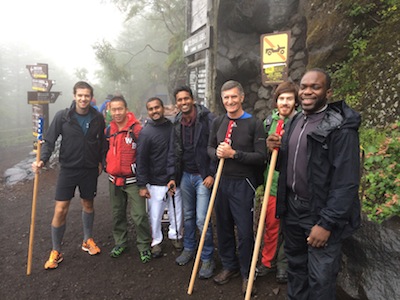
Mt. Fuji Image 1
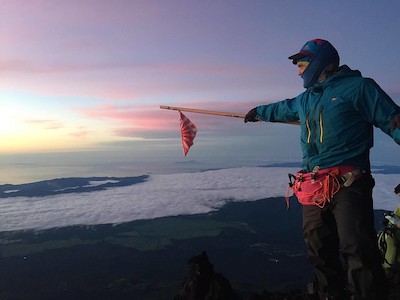
Mt. Fuji Image 2
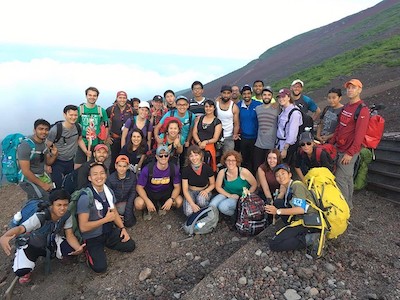
Mt. Fuji Image 3
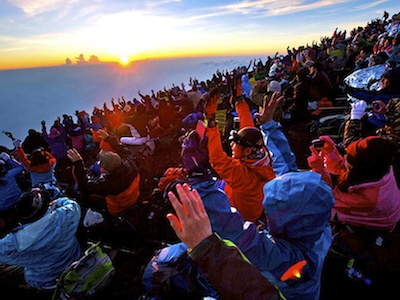
Mt. Fuji Image 4
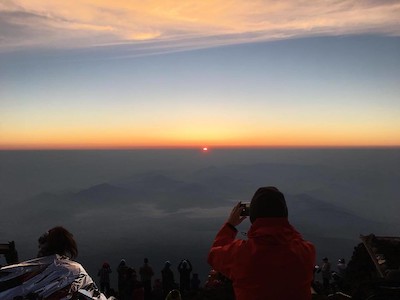
Mt. Fuji Image 5
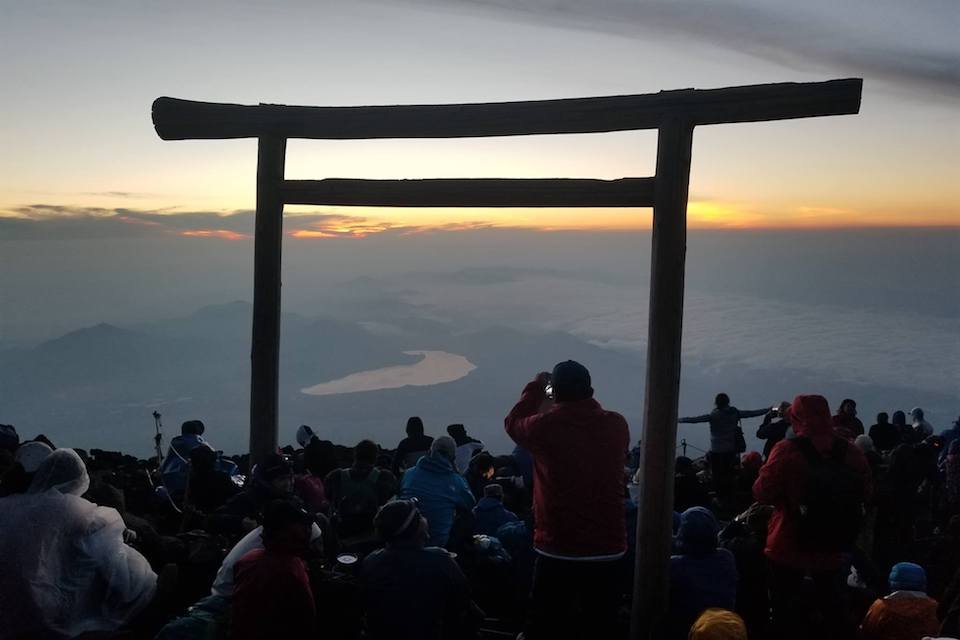
Mt. Fuji Image 6
Featured video.

ABOUT TOKYO GAIJINS OR 'TG'
We are an outdoor/sports event and travel company that regularly organize a wide variety of fun and exciting activities all over Japan. From the casual outdoor lovers to adrenaline junkies. For people who just wanted to break a sweat and for sports addicts. For those who just wanted to socialize, meet people and make new friends.
Whatever your nationality is YOU ARE MORE THAN WELCOME TO JOIN!
LET’S KEEP IN TOUCH!
We’d love to keep you updated with our latest news and offers.
Travel Agency License No. 2-6815
© Copyright 2024 • Tokyo Gaijins. All Rights Reserved.
How to Climb Mount Fuji: The Complete Guide
:max_bytes(150000):strip_icc():format(webp)/jessicaesaprofile-7bb1d24acee44aa5839ac875cb2e0bff.jpg)
PRASIT CHANSAREEKORN / Getty Images
- Trails to Climb
How to Reach the Trails
The best time to climb mount fuji, night climbing and mountain huts.
- Permits & Fees
- What You Should Bring
Safety Tips
Mount Fuji has been a place of fascination for centuries with its distinctive cone shape and snow-capped peak. As the tallest mountain in Japan (the summit reaches 12,388 feet), it has been portrayed endlessly in Japanese art, music, and literature perhaps, most famously by artist Katsushika Hokusai who created the 36 views of Mount Fuji.
The views from the top are transformative, and reaching the summit yields a feeling of complete euphoria. Named a UNESCO World Heritage Site in 2013, there is no trip in Japan that comes close to the hike up Mount Fuji, making it a truly unique experience and an item on many a traveler's bucket lists.
Mount Fuji is an active stratovolcano (last erupting in 1707) with three volcanoes on top of each other: the Komitake volcano, the Kofuji volcano, then Fuji at the top. This means that a trek to the summit is is makes for a dynamic climb with four trails available, depending on how much of a challenge you’re after, and the opportunity to slide down the volcanic rocks on your descent.
Due to the adverse weather conditions, Mount Fuji can only be climbed during the climbing season, and while it’s possible to climb off-season (by following certain protocol) it’s not advised. This means, ticking that this incredible bucket-list experience off your list will come with a certain amount of planning. While it is possible to climb Fuji on a day trip from Tokyo , many people choose to stay overnight by booking a mountain hut in advance or by starting the climb late and hiking until dawn to see the sunrise. With all that said, here’s everything you need to know about planning your Mount Fuji climb.
Trails to Climb Mount Fuji
There are four trails, each with ten stages, that you can take to the summit of Mount Fuji though most hikers typically start from the fifth station. Each of these trails is color-coded for convenience:
- Yoshida (Yellow Trail): This is the most popular trail to climb Mount Fuji and starts at the Fuji-Subaru Line 5th Station leading to the summit from the north side of the mountain. It’s perfect for people wanting to stay overnight before finishing the hike at dawn as there are mountain cabins and other facilities scattered on the way up. Conversely, there is a separate trail to descend with far fewer accommodation options. This trail diverges from the Subashiri route at the eighth station so pay attention to the signs once you get there. The route typically takes six hours to ascend and four hours to descend and is considered a beginners trail.
- Subashiri (Red Trail): The Subashiri trail shares the Yoshida trail until the eighth station where it diverges to become a climb more suited to experienced hikers. This is because the forest zone extends up into high altitudes and night hikers have to be particularly careful and bring a headlamp. Hikers are rewarded with more varied views on this trail. During descent, you will walk down a trail of volcanic gravels making for a more exciting and intense experience. The route typically takes six hours to ascend and three hours to descend.
- Fujinomiya (Blue Trail): This is the second most popular route to the top of Mount Fuji as it’s the quickest providing a steep and rocky incline to the top taking just five hours. This trail approaches Fuji from the south side starting at Fujinomiya Trail 5th Station and ascends and descends via the same route so there’s less confusion. The descent takes three hours.
- Gotemba (Green Trail): This is the most challenging climb up to Mount Fuji. The route is a gentle slope with a steady incline to the top; it’s suited to experienced hikers who can handle the large altitude difference otherwise it can quickly become exhausting. You will see far fewer people attempting this route so your hike will be quieter and you will always have a clear view of Fuji as you climb. This route also allows offers a fun descent sliding down volcanic gravel. Note that there are no huts or toilets on this route until the seventh station. The route typically takes seven hours to ascend and three hours to descend.
During the climbing season, which lasts the summer period, shuttle buses run regularly from 6:30 a.m. to 8:30 p.m. to and from nearby train stations for 1,500 yen (around $13.75) each way. You can also catch the bus directly from Tokyo, Shizuoka, and Gotemba which will take you directly to the Fuji Subaru Line 5th station. You can also take the Fuji Excursion Limited Express train from Shinjuku Station directly to Kawaguchiko Station (about 2 hours one way).
The trails are well sign-posted and maps are available at tourist information centers.
Contrary, to popular belief you can hike Mount Fuji outside of the peak season but there are things you will need to take into account. Typically you should aim to hike Mount Fuji over the summer to have the full experience. Here's what you need to know about climbing peak season, off-season, and night climbing.
- Peak season: The climbing season falls between July to early September and there is no need for a guide or permits to climb. Public transport and all trails and facilities like lodges, shops, and toilets are open to the public.
- Off-season : Outside of these months the trails and facilities are closed and climbing isn’t advised due to adverse weather conditions. It’s also much more difficult to reach the mountain with public transport.
While some people do still attempt the climb outside of these months, particularly from April until early June, it can be dangerous, particularly in winter, due to snow and shouldn’t be attempted by inexperienced climbers. Many hikers also opt to ski or sled back down Mount Fuji. Many hikers also opt to ski or sled back down Mount Fuji.
It’s very common to climb Mount Fuji just before dawn or overnight so you won’t find yourself alone making this climb. Most people opt to start hiking late afternoon and stopover at a mountain hut , which can also help you get used to the altitude. An early start will have you at the peak for sunrise, just make sure to bring a head torch. The mountain houses are simple places to rest, don't have shower facilities, and can be crowded; they are simply to rest in. Toilets and simple meals or snacks are available.
Note: Camping on Fuji is prohibited so there's no need to bring a tent.
Permits & Fees
Permits are not required to hike Mount Fuji at any time of year, however, if you hike during the off-season the prefecture police department requests people to complete a climbing form in case of an emergency.
There are no fees involved with hiking Mount Fuji but facilities including toilets, refreshments, lodges, and transport all cost money. Make sure to bring cash and coins with you.
What You Should Bring to Hike Mount Fuji
While it’s important to pack lightly, here are some things that you should bring to make your hike easier"
- Make sure to bring cash for refreshments and transport as well as change as toilets cost 200 - 300 yen
- The weather changes quickly on Fuji so always bring rain gear, gloves, and extra warm layers for when you get closer to the top
- While you can purchase food and drink at each station, this can get expensive and it’s good to have your own with you in case you’re thirsty in between stations
If you don’t want to use climbing poles, you can buy a wooden pilgrim staff which you can then have branded at the stations making for a wonderful souvenir of your climb. Make sure to bring cash as each stamp cost a few hundred yen. This is only available during climbing season.
Climbing Mount Fuji within peak season is considered a safe activity with well-marked trails and facilities but there are always some safety tips to bear in mind:
- It’s common to experience altitude sickness while climbing Mount Fuji. It’s advised that you take some time to adjust to the altitude once you reach the fifth station before continuing. If you do notice symptoms of altitude sickness such as headaches and nausea then don’t over-exert yourself and return to a lower elevation.
- Yoshida is the easiest of the four trails but still requires some hiking experience and frequent breaks are recommended. The other trails are best suited to those who climb regularly.
- Try to walk along the inner edges of the climbing tracks instead of the outer edge as it causes rocks to slip.
- Make sure you wear good hiking boots with suitable ankle support.
- If you’re hiking off-season then wearing crampons is advised and you may also need hiking poles or ice axes depending on conditions.
- Bring a headtorch if you’re likely to be walking while it’s still dark.
- As there are few trees on the climb, you need to protect yourself from UV rays with sunscreen and a hat.
18 Best Things to Do in Japan in Summer
The 10 Best Hikes in Hokkaido
Mount Fuji: the Most Famous Mountain in Japan
The 15 Best Day Trips from Tokyo
The Complete Guide to Climbing Morocco's Mount Toubkal
Mount Hood National Forest: The Complete Guide
The 15 Best Hiking Destinations in Asia
The Top 25 Things to Do in Japan
What I Learned From Climbing Mount Kilimanjaro
Mount Diablo State Park: The Complete Guide
The Complete Guide to Visiting Pikes Peak in Colorado
K2: How to Climb the Abruzzi Spur Route
The 8 Best Hikes in Yellowstone National Park
How to Go Teahouse Trekking in Nepal
The Best Outdoor Activity in Every State
Rocky Mountain National Park: The Complete Guide
- Mt. Fuji Tours
- Mt. Fuji Climbing Tour
About climbing Mt. Fuji
- ABOUT CLIMBING
- CLIMBING GEAR
Mt. Fuji, with an elevation of 3,776 meters, is Japan’s tallest mountain. Not only special for its height, it has been an object of religious belief since ancient times for its graceful shape, which many of Japan’s artists have rendered, such as Hokusai Katsushika, Hiroshige Utagawa, Tessai Tomioka, and Taikan Yokoyama;there is not enough time to list them all. Although Mt. Fuji has been loved by Japanese for a very long time, you need to be careful when climbing due to its height and severe weather. Enjoy climbing beautiful Mt. Fuji following climbing guidelines.

- Climb the mountain with a schedule that allows for flexibility. Getting enough sleep and refraining from alcohol are also precautions to take.
- At the fifth station, take up to to one or two hours break. Your body will get used to the altitude.
- Walk slowly and take short breaks. Aim to rest five minutes for every 25 minutes climbing, or 10 minutes for every 50 minutes climbing.
- Keep your metabolism up by frequently replenishing fluids and going to the bathroom.
- Practice abdominal breathing to get as much oxygen as you can.

Check what to bring
Climbing manners
Mt. Fuji itself and much of the area at its base is designated as a national park, a World Heritage Site, and a historical landmark, and protected by law. Collecting flora and fauna, taking rocks and lava stones, writing graffiti, pitching tents and setting open-air fires, and letting pets run free are all prohibited.

Staff Review
4 types of Mt. Fuji Climbing Tour
*Private rooms are limited to groups of two people.
*The plan that guarantees a private room is limited to 5 rooms per day for the total of the standard plan and the plan with gear.
*Admission fee to Mt. Fuji (Required from 2024) is included.
*If the link does not appear in the calendar on the reservation page, that departure date is sold out. If a cancellation occurs, the link will be displayed again.
*Mt. Fuji Climbing Tour 2024 will be available soon! Booking stars on March 4, 2024.
Standard Plan
from 41,000 yen
This plan includes
- Round-trip bus from Shinjuku (Tokyo)
- Stay at a mountain hut
- English-speaking guide
- Free rental helmet
- A 500 ml bottle of water (receive at a mountain hut)
- WILLER bottle carabiner
Standard Plan (Private room guaranteed)
from 43,000 yen
- Stay at a mountain hut (private room)
Climbing Gear Rental Plan
from 53,000 yen
- 5 piece climbing gear rental
Climbing Gear Rental Plan (Private room guaranteed)
from 55,000 yen

- The great view of Mt. Fuji
- Learn about the profound appeal of Mt. Fuji
- Enjoy around Mt. Fuji
- Tracing the journey of water from Mt. Fuji
- Onsen Hot Springs
- Golf Tourism in Gotemba Oyama area
- Golf Tourism in Izu area
- Golf Tourism in Western region
- Tokaido Highway
- Shizuoka National Parks
- Travel like locals
- Meet the locals
- The Izu Region
- The Fuji Region
- The Central Region
- The Western Region
- Enjoy a journey to be healed by the natural scenery while touring around the Izu Peninsula!
- Enjoy a trip around the foothills of Mt. Fuji while taking in the local cuisine and activities!
- A trip to experience the local cuisine and unexplored areas of the western part of the prefecture
- How to walk around the hometown of Mt. Fuji! Enjoy the best local cheap eats and shopping!
- Atami Station
- Mishima Station
- Shin-Fuji Station
- Shizuoka Station
- Kakegawa Station
- Hamamatsu Station
Mt. Fuji 2 days climb private tour
Activities > Places > Mt. Fuji 2 days climb private tour
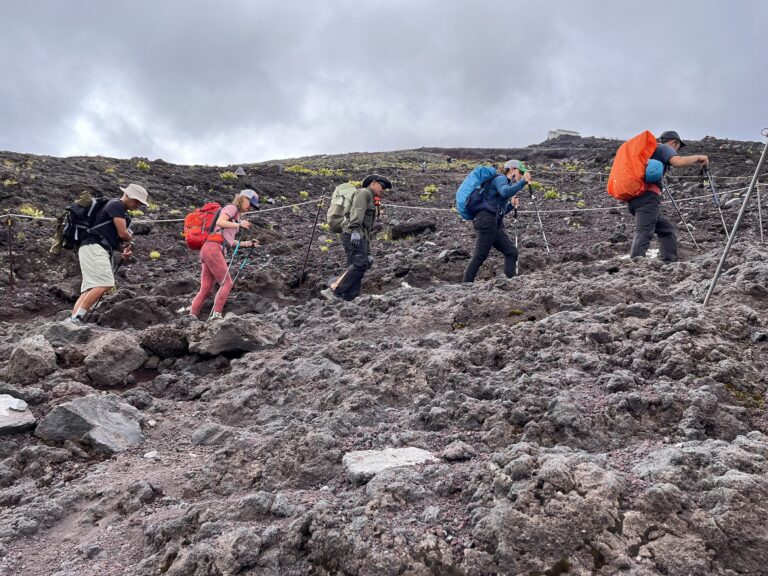
Description
~Aim for Mt. Fuji, Japan’s highest peak!~ A 2-day/1-night private climb, aiming for the top of Mt. Fuji with an English speaking guide. We ascend the mountain using the Fujinomiya Route, the shortest of the four routes to the top. We will stay overnight on 8th station or 9th station and hike up in the dark with headlight next morning. We ascend to the peak before sunrise and view amazing sunrise at the peak. Descent is via the Prince Route, taking in the scenic views of Gotemba trail. We stop at the Mt. Fuji’s newest and largest crater “Hoei crater” and Mt. Hoei with an amazing 360 degrees panorama view point. This tour is packed with attractions and spectacular views from Mt. Fuji along the way both ascent and descent. Challenge yourself to climb Mt. Fuji, Japan’s highest mountain!
Company Name
Sorry, no records were found. Please adjust your search criteria and try again.
Sorry, unable to load the Maps API.
Nearest Shinkansen station
Contact email.
Contact form Book form
Related activities
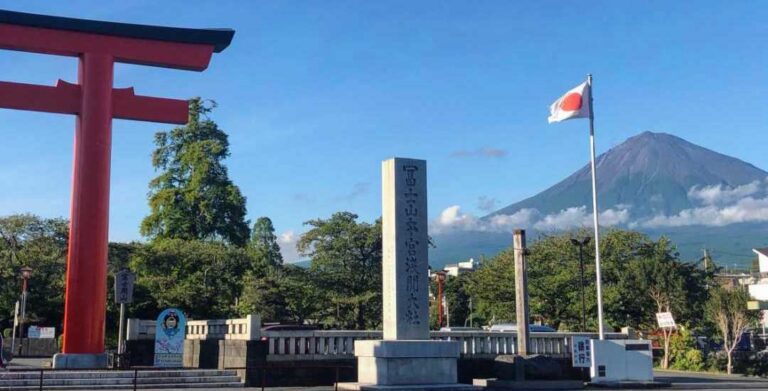
Mt. Fuji Famous Food Tour

FUJINOMIYA TOUR – to learn about Mt. Fuji
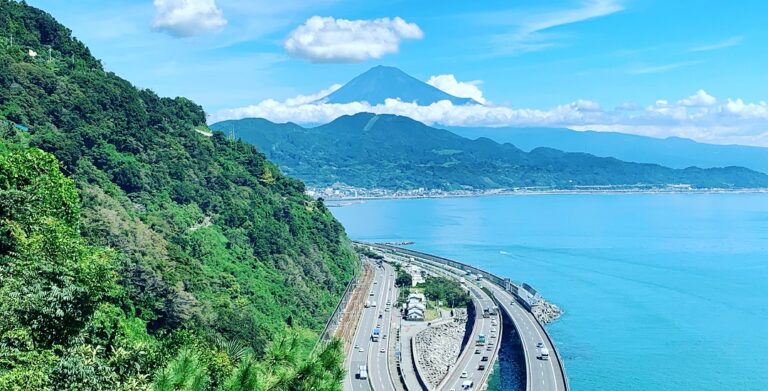
2 days 1 night / Tokaido Guided Tour in Shizuoka City
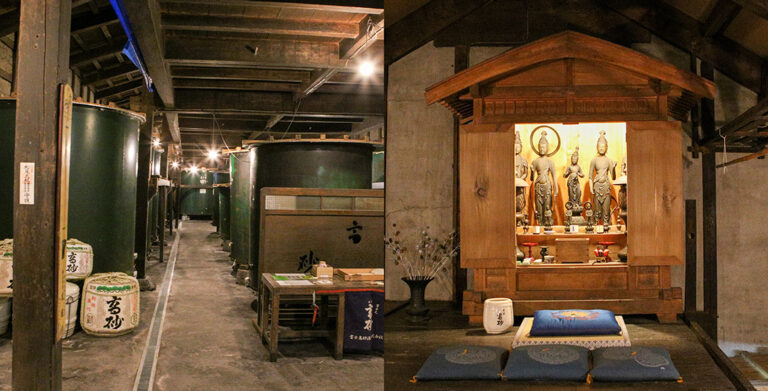
2D1N Discover Mt. Fuji Tour
公益社団法人 静岡県観光協会
Privacy Policy
Copyright © 2024 Explore Shizuoka. All rights reserved. Presented by Shizuoka Prefectural Tourism Association.
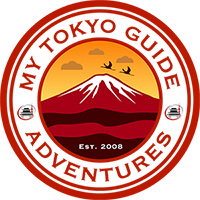
- How to Climb Mt. Fuji?
- Is Climbing Mt. Fuji Hard?
- Is Climbing in Offseason Allowed?
- Mt. Fuji Weather Forecast
- Mt. Fuji Summit Certificate
- Mt. Fuji Bullet Train Access
- Mt. Fuji Hiking Rental Shop
- Mt. Fuji Climb Fitness Guide
- Mt. Fuji Equipment List
- 2-Day Mt. Fuji Climb
- Private Mt. Fuji Climb
- Mt. Fuji Off-Season Climb
- Mt. Fuji Nature Hike
- Mt. Fuji Rafting
- Mt. Fuji Snow Climbs
- Tour Inquiry Form
Mt. Fuji Off-Season Climbs

Like Seeing the World From the Top Down! Really great experience. It was early in the season, so there was still snow for at least 1/3 of the way up, but that added so much to the mystique of the trip. It was particularly cloudy at the lower altitudes, but once we got above the cloud layer, it was impressive views the rest of the way. - TripAdvisor Review - Mt. Fuji Off-Season Climb
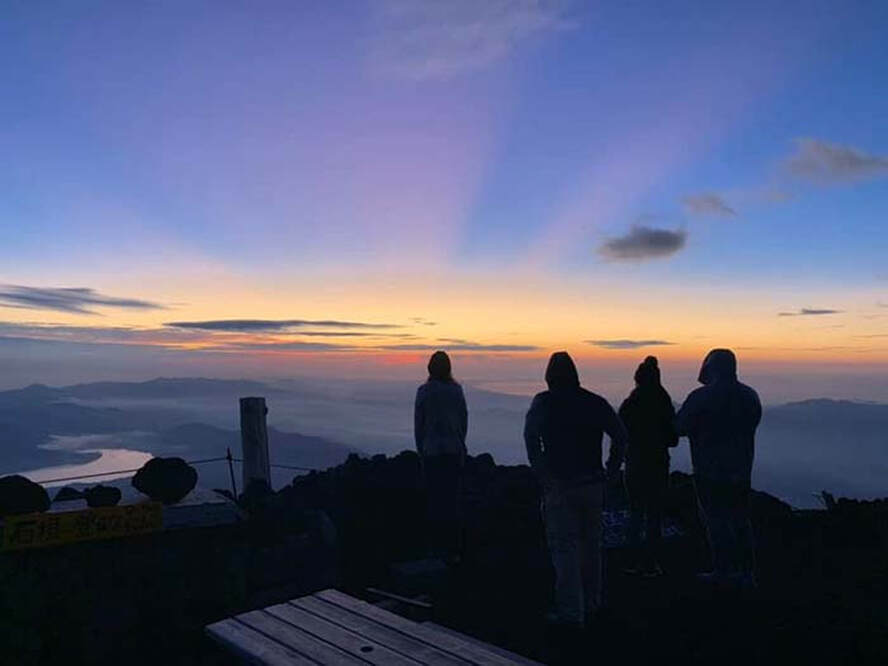
- 4:00pm Shin-Fuji Station
- Stay at Mt. Fuji Base Hotel
- 5:00am Wake Up (Eat Breakfast)
- 5:30am Drive to 5th station
- 6:30am Start Hike
- 12:00noon Reach Summit
- 4:00pm-5:00pm return to 5th Station
- 6:00pm Shin-Fuji Station Drop-off
- Start and end your climb from Shin-Fuji Bullet Train Station for quick returns to Tokyo and Kyoto/Osaka by Bullet Train
- Spend night at Hotel at the base of Mt. Fuji
- Use the less crowded Mt. Fuji climbing route
- All transportation / Hotel Stay
- All those who reach the summit will be presented with an official “Mt. Fuji Summit Certificate" dated and verified by your guide to show your achievement to your friends and family. ( See Sample )
- This year, during the off-season, exclusively indulging in private climbs. See prices under 1-Day Summit climbs Here
- Round trip from Shin-Fuji Station to Fuji 5th station
- 1 Night stay at Base Hotel
- English / Japanese speaking Mountain Guide
- Summit certificate for those who reach the summit

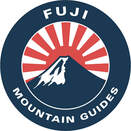
- Two Day Mt. Fuji Tour
- Off Season Two Day Mt. Fuji Tour
- Private Two Day Mt. Fuji Tour
- Private One Day Mt. Fuji Tour
- Private Three Day Fuji Discovery Trip
- Tour Rental
- Non Tour Rentals
- About Mount Fuji
- Climbing Mt Fuji
- Mt Fuji Weather Forecast
- Photo Gallery
- Fuji Mountain Guides
- Merchandise
SEP 11 - OCT 15 OFF SEASON 2-DAY MT. FUJI TOUR
Tour inclusions, featured in, required gear, sep 11 - oct 15 off season tour.

- Preplanned tours
- Daytrips out of Moscow
- Themed tours
- Customized tours
- St. Petersburg
Moscow Metro
The Moscow Metro Tour is included in most guided tours’ itineraries. Opened in 1935, under Stalin’s regime, the metro was not only meant to solve transport problems, but also was hailed as “a people’s palace”. Every station you will see during your Moscow metro tour looks like a palace room. There are bright paintings, mosaics, stained glass, bronze statues… Our Moscow metro tour includes the most impressive stations best architects and designers worked at - Ploshchad Revolutsii, Mayakovskaya, Komsomolskaya, Kievskaya, Novoslobodskaya and some others.
What is the kremlin in russia?
The guide will not only help you navigate the metro, but will also provide you with fascinating background tales for the images you see and a history of each station.
And there some stories to be told during the Moscow metro tour! The deepest station - Park Pobedy - is 84 metres under the ground with the world longest escalator of 140 meters. Parts of the so-called Metro-2, a secret strategic system of underground tunnels, was used for its construction.
During the Second World War the metro itself became a strategic asset: it was turned into the city's biggest bomb-shelter and one of the stations even became a library. 217 children were born here in 1941-1942! The metro is the most effective means of transport in the capital.
There are almost 200 stations 196 at the moment and trains run every 90 seconds! The guide of your Moscow metro tour can explain to you how to buy tickets and find your way if you plan to get around by yourself.


Komsomolskaya metro station looks like a museum. It has vaulted ceilings and baroque decor.
Hidden underground, in the heart of Moscow, are historical and architectural treasures of Russia. These are Soviet-era creations – the metro stations of Moscow.
Our guide Maria introduced these elaborate metro stations as “the palaces for the people.” Built between 1937 and 1955, each station holds its own history and stories. Stalin had the idea of building beautiful underground spaces that the masses could enjoy. They would look like museums, art centers, concert halls, palaces and churches. Each would have a different theme. None would be alike.
The two-hour private tour was with a former Intourist tour guide named Maria. Maria lived in Moscow all her life and through the communist era of 60s to 90s. She has been a tour guide for more than 30 years. Being in her 60s, she moved rather quickly for her age. We traveled and crammed with Maria and other Muscovites on the metro to visit 10 different metro stations.

Arrow showing the direction of metro line 1 and 2

Moscow subways are very clean
To Maria, every street, metro and building told a story. I couldn’t keep up with her stories. I don’t remember most of what she said because I was just thrilled being in Moscow. Added to that, she spilled out so many Russian words and names, which to one who can’t read Cyrillic, sounded so foreign and could be easily forgotten.
The metro tour was the first part of our all day tour of Moscow with Maria. Here are the stations we visited:
1. Komsomolskaya Metro Station is the most beautiful of them all. Painted yellow and decorated with chandeliers, gold leaves and semi precious stones, the station looks like a stately museum. And possibly decorated like a palace. I saw Komsomolskaya first, before the rest of the stations upon arrival in Moscow by train from St. Petersburg.
2. Revolution Square Metro Station (Ploshchad Revolyutsii) has marble arches and 72 bronze sculptures designed by Alexey Dushkin. The marble arches are flanked by the bronze sculptures. If you look closely you will see passersby touching the bronze dog's nose. Legend has it that good luck comes to those who touch the dog's nose.

Touch the dog's nose for good luck. At the Revolution Square station

Revolution Square Metro Station
3. Arbatskaya Metro Station served as a shelter during the Soviet-era. It is one of the largest and the deepest metro stations in Moscow.

Arbatskaya Metro Station
4. Biblioteka Imeni Lenina Metro Station was built in 1935 and named after the Russian State Library. It is located near the library and has a big mosaic portrait of Lenin and yellow ceramic tiles on the track walls.

Lenin's portrait at the Biblioteka Imeni Lenina Metro Station

5. Kievskaya Metro Station was one of the first to be completed in Moscow. Named after the capital city of Ukraine by Kiev-born, Nikita Khruschev, Stalin's successor.

Kievskaya Metro Station
6. Novoslobodskaya Metro Station was built in 1952. It has 32 stained glass murals with brass borders.

Novoslobodskaya metro station
7. Kurskaya Metro Station was one of the first few to be built in Moscow in 1938. It has ceiling panels and artwork showing Soviet leadership, Soviet lifestyle and political power. It has a dome with patriotic slogans decorated with red stars representing the Soviet's World War II Hall of Fame. Kurskaya Metro Station is a must-visit station in Moscow.

Ceiling panel and artworks at Kurskaya Metro Station

8. Mayakovskaya Metro Station built in 1938. It was named after Russian poet Vladmir Mayakovsky. This is one of the most beautiful metro stations in the world with 34 mosaics painted by Alexander Deyneka.

Mayakovskaya station

One of the over 30 ceiling mosaics in Mayakovskaya metro station
9. Belorusskaya Metro Station is named after the people of Belarus. In the picture below, there are statues of 3 members of the Partisan Resistance in Belarus during World War II. The statues were sculpted by Sergei Orlov, S. Rabinovich and I. Slonim.

10. Teatralnaya Metro Station (Theatre Metro Station) is located near the Bolshoi Theatre.

Teatralnaya Metro Station decorated with porcelain figures .

Taking the metro's escalator at the end of the tour with Maria the tour guide.
Have you visited the Moscow Metro? Leave your comment below.
January 15, 2017 at 8:17 am
An excellent read! Thanks for much for sharing the Russian metro system with us. We're heading to Moscow in April and exploring the metro stations were on our list and after reading your post, I'm even more excited to go visit them. Thanks again 🙂
December 6, 2017 at 10:45 pm
Hi, do you remember which tour company you contacted for this tour?
Leave a Reply Cancel reply
You must be logged in to post a comment.
Please go to the Instagram Feed settings page to create a feed.

IMAGES
VIDEO
COMMENTS
11:30am - Arrive at Mt.Fuji 5th station (Prepare to climb) 12:30 Leave Mt.Fuji 5th station via ascending route. 5:00pm~6:00pm - Arrive at 9th station (3,460m). Stay at Mountain Hut (Dinner and Rest) Day 2: 9th Station - Top of Mt.Fuji - 5th Station. 1:00~2:00 Wake Up (Eat Breakfast) 2:00~3:00 Leave Mountain Hut for the summit.
June 25 - Oct 15. The 1 Day Mt. Fuji tour will begin in Tokyo or the Mt. Fuji area, guiding you up and down Mt. Fuji and back to your accommodation, all within 24 hours. Available exclusively as a private tour option, we offer custom pick up and drop offs in the Tokyo, Mt. Fuji and Hakone areas. Learn More. Accepting 2024 tour reservations.
JUN 25 - SEP 10. IN SEASON 2-DAY MT. FUJI TOUR. ¥55,000 +13% tax/fees (¥62,150 tax incl) In our most popular summer offering, the 2-Day Mt. Fuji Tour, will give ample time in your pursuit to reach the summit of Mt. Fuji. After a long hike the first day, participants enjoy a hot dinner and rest over night in a mountain hut at 3400 meters ...
Available (English and Japanese) Included in the tour. Round-trip bus from Shinjuku (Tokyo), Tour guide support, Stay at a mountain hut, Two meals, English-speaking guide, Free rental helmet, A 500 ml bottle of water (receive at a mountain hut), WILLER bottle carabiner, Admission fee to the Mt. Fuji. ※Option:5 piece climbing gear rental.
All trails are currently closed. ※Fuji-Azami line, Tarobo line and Mt.Fuji Skyline to 5th station have been already closed. We will inform you about the measures for the 2024 Fuji climbing season from now on.
Welcome to Mt. Fuji National Park, the stunning natural oasis located in Japan known for its diverse landscape and rich cultural history.From its picturesque forests and serene shrines, to its breathtaking waterfalls and rejuvenating natural hot springs, this national park has something for everyone.Mt. Fuji is also a popular destination for climbing enthusiasts, with its iconic peak rising to ...
Mt. Fuji package tours. For novice hikers or those who don't want to do so much planning, consider climbing Mt. Fuji with a travel company. These tours can arrange pickup in Tokyo, bus tickets, guides, meals, hut reservations, and more. If you want to ensure the most strenuous part of the Mt. Fuji experience is the ascent itself, leave the rest ...
Visit one of Japan's most magnificent natural monuments on a 2-day trip to Mt Fuji from Tokyo. Accompanied by a knowledgeable guide, ascend to the summit of the magnificent mountain during the night to watch an enchanting sunrise over the spectacular urban landscape of Tokyo. Soothe aching muscles in the steaming serenity of outdoor hot springs and revitalize with flavorsome and fulfilling ...
Unexpected stops and delays, including visits to a day spa and lunch place, have also been reported. Despite these obstacles, the host has been commended for their helpfulness and assistance throughout the tour. Join us as we uncover more about the 2-Day Mt. Fuji Climbing Tour and what it has to offer. Great News!
Climbing at a calm and steady pace helps climbers avoid altitude sickness and allows for a much more enjoyable climb. See our 2-day Mt. Fuji tours for more information. The descent of Mt. Fuji is typically between 3 and 4 hours. Although descending Mt. Fuji is twice as fast as climbing up, it is also considered by many to be be twice as difficult.
Fuji Subaru Line 5th Station (Yamanashi Prefecture) Yoshida Trail Altitude: about 2300 meters Ascent: 5-7 hours Descent: 3-5 hours This is the most popular base for the climb to the summit, and the most easily accessible 5th station from the Fuji Five Lake region and central Tokyo.Lots of mountain huts line the trail around the 7th and 8th stations, and there are separate trails for the ascent ...
Season: July (early summer) through September (early autumn) Price: From JPY 190,000/tour. Duration: 2 days. Starts/Ends: Subashiri Trail 5th Station in Oyama town, Shizuoka. Included: Guiding by a local Mt. Fuji climbing guide. Not Included: Lodging and meals charges (Fujisan Curator will book a mountain hut for you on your behalf) Public ...
Climb the highest and most iconic mountain of Japan, hassle free! We sell and run Mt. Fuji 2-day/1-night hike tours (via popular Fujiyoshida route) everyday from 2024 July 1 until September 10 (Sep 11 return). All departure is guaranteed so once you are booked, you are going (unless we have to cancel the tour due to a typhoon or very strong ...
How to Reach the Trails. During the climbing season, which lasts the summer period, shuttle buses run regularly from 6:30 a.m. to 8:30 p.m. to and from nearby train stations for 1,500 yen (around $13.75) each way. You can also catch the bus directly from Tokyo, Shizuoka, and Gotemba which will take you directly to the Fuji Subaru Line 5th ...
About climbing Mt. Fuji. Mt. Fuji, with an elevation of 3,776 meters, is Japan's tallest mountain. Not only special for its height, it has been an object of religious belief since ancient times for its graceful shape, which many of Japan's artists have rendered, such as Hokusai Katsushika, Hiroshige Utagawa, Tessai Tomioka, and Taikan ...
Overview. ~Aim for Mt. Fuji, Japan's highest peak!~. A 2-day/1-night private climb, aiming for the top of Mt. Fuji with an English speaking guide. We ascend the mountain using the Fujinomiya Route, the shortest of the four routes to the top. We will stay overnight on 8th station or 9th station and hike up in the dark with headlight next morning.
Guided tours with onsens. Duration: 10 hours 30 minutes. Best for: Onsen enthusiasts & relaxation retreats. Ticket: ¥10,000. Get convenient pick-ups and drop-offs from Tokyo to Mt. Fuji with this expert-led guided tour. Capture stunning views of Japan's tallest peak at the 4,000-year-old volcanic valley: Owaku-dani.
2024 OFF-SEASON 1-DAY Mt.FUJI CLIMB ITINERARY . Day 1: Shin-Fuji - Mt.Fuji 5th Station - 8th Station. 4:00pm Shin-Fuji Station. Stay at Mt. Fuji Base Hotel. Day 2: 1-Day Summit and return to Shin-Fuji Station. 5:00am Wake Up (Eat Breakfast) 5:30am Drive to 5th station.
Customized tours; St. Petersburg; SMS: +7 (906) 077-08-68 [email protected]. Moscow Metro 2019. Will it be easy to find my way in the Moscow Metro? It is a question many visitors ask themselves before hitting the streets of the Russian capital. As metro is the main means of transport in Moscow - fast, reliable and safe - having some ...
The Off Season 2-Day Mt. Fuji Tour offers a more peaceful and relaxed approach to climbing Mt. Fuji. On day 1 we climb to a mountain hut located at 3,000 meters and on Day 2 we climb to the summit and back down the mountain. The sunrise is seen from our mountain hut at the 7th station on day 2, before continuing our climb to the summit.
Moscow Metro. The Moscow Metro Tour is included in most guided tours' itineraries. Opened in 1935, under Stalin's regime, the metro was not only meant to solve transport problems, but also was hailed as "a people's palace". Every station you will see during your Moscow metro tour looks like a palace room. There are bright paintings ...
Welcome to the 628DirtRooster website where you can find video links to Randy McCaffrey's (AKA DirtRooster) YouTube videos, community support and other resources for the Hobby Beekeepers and the official 628DirtRooster online store where you can find 628DirtRooster hats and shirts, local Mississippi honey and whole lot more!
The two-hour private tour was with a former Intourist tour guide named Maria. Maria lived in Moscow all her life and through the communist era of 60s to 90s. She has been a tour guide for more than 30 years. Being in her 60s, she moved rather quickly for her age. We traveled and crammed with Maria and other Muscovites on the metro to visit 10 ...